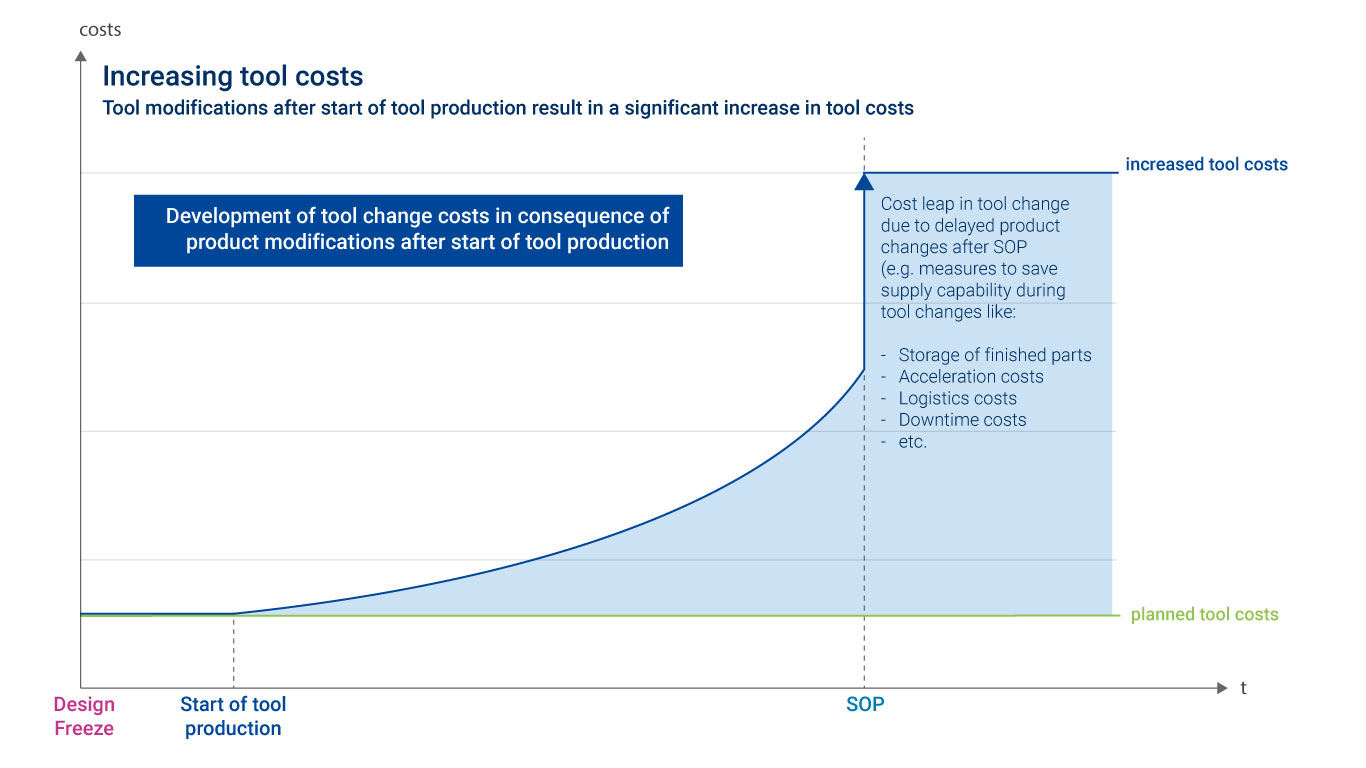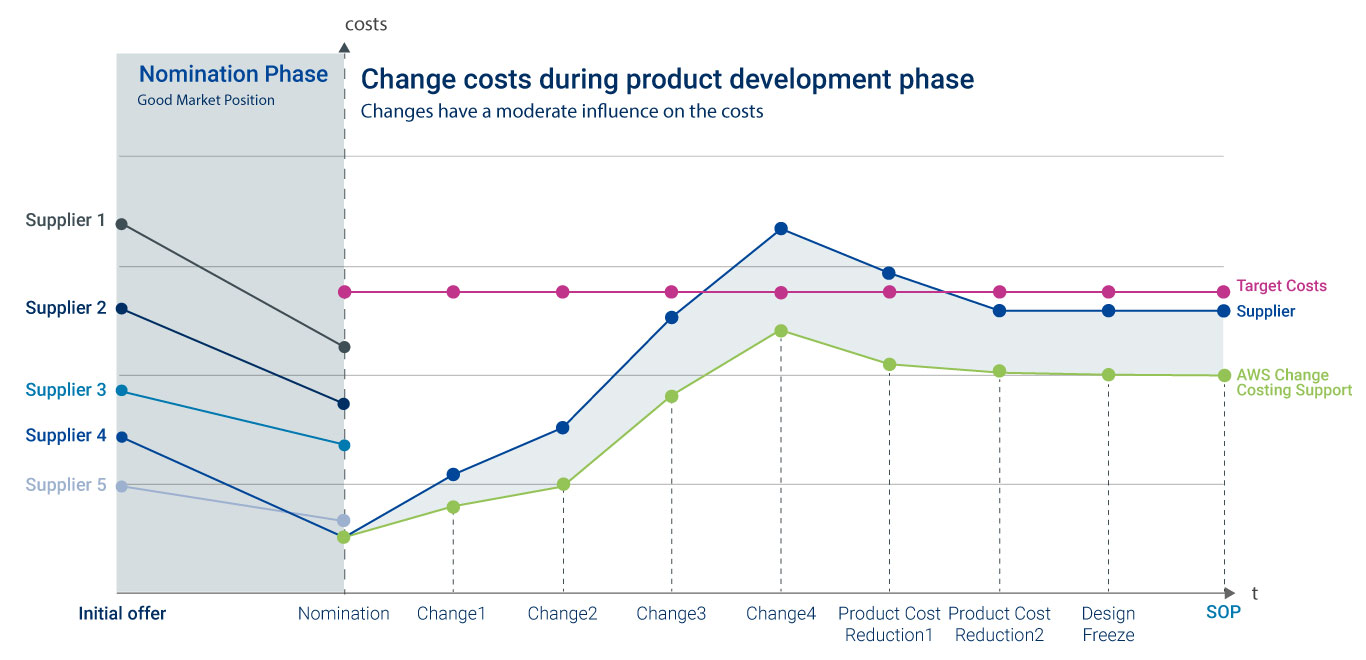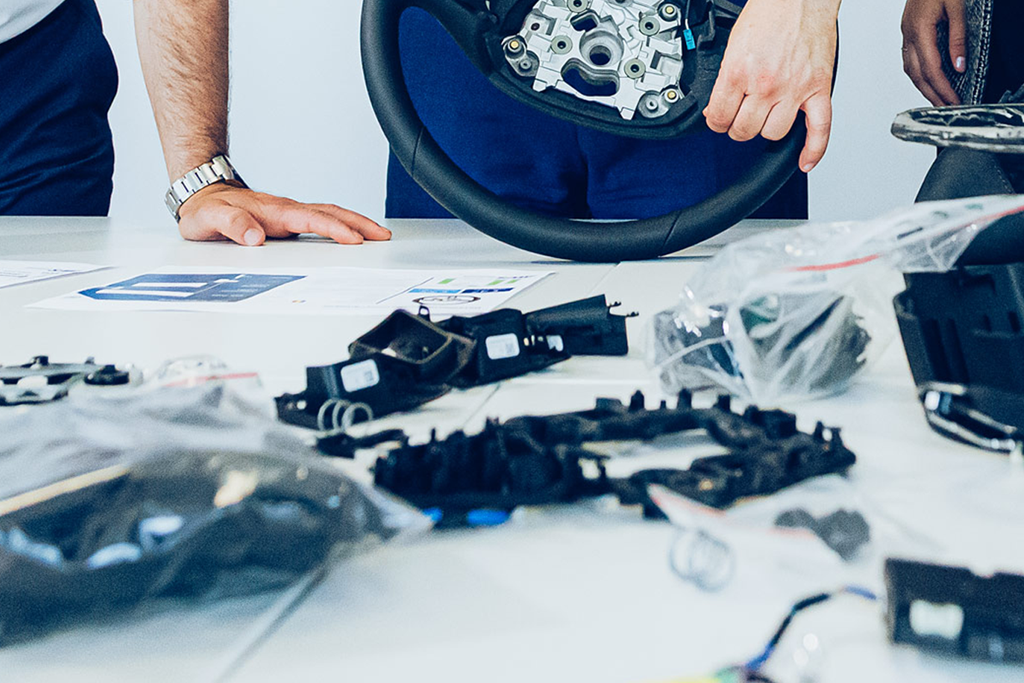Increasing relevance of Change Costing
due to the European Ecodesign for Sustainable Products Regulation (ESPR)
The forthcoming extensions and adjustments to the EU Ecodesign Regulation will become increasingly relevant, especially in regard to the prospective change costs, which will have a significant impact on companies. With the Green Deal, the European Union is pursuing the aim of transforming Europe into a fair and prosperous society with a modern, competitive and climate-neutral circular economy. A key component of the European Green Deal is the Directive for sustainable products, which is now being expanded and revised. In order to comply with the minimum legal requirements in the future, product designs will have to be adapted, and processes redesigned, which will inevitably result in additional change costs.

The existing Ecodesign Directive from 2005 was replaced from 18 July 2024 by the new Regulation (EU) 2024/1781. This regulation requires companies to integrate environmental sustainability into the design of products and processes at all stages of their entire value chain.
The objective is to adapt products traded in the internal market in accordance with the minimum environmental requirements in order to reduce energy and raw material consumption. The following product aspects are to be optimised by the new EU directive as part of the European Green Deal, as far as they are relevant for the respective product group:
While the previous Ecodesign Directive only referred to energy-related products, including light bulbs, household appliances, electrical appliances, heating and air conditioning systems and other specific products (e.g. circulation pumps, electric motors, power transformers), the new regulation extends the scope to almost all product groups. The only exceptions are products in the areas of vehicles and security and defence.
In the first working plan, to be adopted by 19 April 2025, the Commission gives priority to the following product groups for the development of ecodesign requirements:
According to Regulation (EU) 2024/1781 paragraph (100), compliance with ecodesign criteria will also be mandatory for the award of public contracts. In this way, the Commission aims to encourage the procurement of more sustainable products.
The calculation of change costs is a valuable tool for assessing the financial outlay for various product adaptations, and for establishing a solid basis for prioritising changes. In the early stages of product development, there are always changes in the design of a product. By calculating change costs in time, unexpected cost increases and possible budget overruns can be prevented. Particularly in large companies with inflexible structures and strictly demarcated departments, it is often unclear how changes will affect product and process costs. In addition, change costing provides a transparent foundation for negotiating prices with suppliers and external service providers. This is particularly crucial if the SOP has already been conducted. As illustrated in the following diagram, change costs increase over the course of the product life cycle.

Once the design phase has been completed and the tool has been manufactured, the cost of the tool increases rapidly as changes are made.

The same applies to product changes after the contract has been awarded to a supplier. Each change increases costs by a significant amount. In most cases, however, the savings potential is greater than the company realises.

What factors have an impact on the change costs?
Change costs are influenced by several factors, including the complexity of the change and the scope of work required to implement it. But most critical is the timing of the change.

Savings potential for change costs
Once a change assessment decision is made, coordination meetings are held to establish a common understanding of the product changes. The next step is the implementation of the change calculation. The evaluation of the change costs can include a parts price calculation, tool and machine efforts, and the calculation of project-specific systems and workstations and other resources such as painting racks, gauges, etc. During the calculation process, there is regular consultation with the purchasing department and with the customers. Afterwards, support can be provided in negotiations with suppliers. The aim is to realise the savings potential as effectively as possible.

From the early stages through to SOP, change assessments are the assurance of sustained success. The new EU eco-design regulation requires products to be more environmentally friendly. This is forcing companies to adapt the design of their products. The resulting change costs and their appropriate valuation will become considerably more important.
The calculation of change costs enables a well-founded evaluation and prioritisation of product adaptations, helps to avoid unexpected cost increases and creates a transparent basis for negotiations with suppliers and service providers.
The rapid escalation of change costs can result in the inefficient utilisation of valuable resources. It is therefore prudent to seek the guidance of experienced experts in order to enhance the efficiency and cost-effectiveness of your projects.
Contact us if you would like to find out how we can strategically improve your change processes together!
You need to load content from reCAPTCHA to submit the form. Please note that doing so will share data with third-party providers.
More InformationYou are currently viewing a placeholder content from Turnstile. To access the actual content, click the button below. Please note that doing so will share data with third-party providers.
More InformationYou are currently viewing a placeholder content from Facebook. To access the actual content, click the button below. Please note that doing so will share data with third-party providers.
More InformationYou are currently viewing a placeholder content from Instagram. To access the actual content, click the button below. Please note that doing so will share data with third-party providers.
More InformationYou are currently viewing a placeholder content from X. To access the actual content, click the button below. Please note that doing so will share data with third-party providers.
More Information